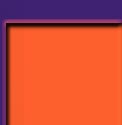 |
 |
 |
 |
 |
| The
first basic design assignment ! |
| |
The
freshers to the course of architectural studies are actually like
raw material. Generally it's an uphill task for basic design professors
to bring the student on the common platform of understanding, and
to make them familiar with the vocabulary of visual design. The
terms like visual perceptions, the role of art in architecture,
the difference between terminology like skills, craft, artifacts,
artwork, and work of art are hardly known to new students. It
is also necessary to make these students versatile with the experience
of doing something by their own hands that is to create something
of their own. Pre- College students are absolutely new to the process
of designing. Pre-College technique of studying is sometimes based
on mere mugging and reproduction of given notes at the time of the
examination hour. The students mostly have very crude and undefined
ideas about the concept of designing. Also they do not understand
the difference between the two verbs "designing"
and "creating art". The first and foremost aspect
about which all students of design should have clarity, is the concept
of "composition". The unconscious mind of any individual
of any age knows how to make a choice about good and bad compositions.
Daily newspapers, magazines, books have several illustrations in
the form of advertisements. Experienced professionals of visual
art design all these advertisements. These illustrations are also
readily available to the students, and they are constantly being
exposed to it. The subjects in these illustrations from magazines,
daily newspapers etc are also full of variety, they contain human
beings, animals, trees, flowers, leaves, mountains, rivers, sand
dunes and numerous such subjects. The subjects are either artificially
composed or photographed as a composed object. As a part of their
first assignment of basic design, the students are asked to select
a number of such compositions in the form of printed photographs,
pictures, advertisements and illustrations from the available books
and magazines. Initially their selection is based on the logic "I
like it" and "I don't like it". In the question-and-answer
session and interaction with the student, students are exposed to
the collected material of the whole class, and in a way they visually
see 40 times more work than actually they would have done in isolation
(each class of first-year architecture has 40 students). After the
process of selection of visual material, in order to discover and
unmask the basic composition in the pictures, which the students
have collected, students are asked to remove the smaller details
from these pictures. The pictures which are visually "meaningful"
in the conventional manner become "abstract". Now from
this abstracted version it is easier for students to understand
the bare composition made up of basic visual elements like dots,
lines, shapes, colour and texture also. For first time students
are able to analyze the underlying principles, which make the composition
look balanced and proportionate. The abstraction is a technique
adopted by artists from historical times to bring out the aesthetics
of the subject. The basic visual element of the line itself is the
most primitive abstract artistic expression. By application of the
grid, technique of smudging, elimination of colour, one can create
abstract versions of the same "meaningful" pictures that
have been collected by students. |
 |
 |
|
|






